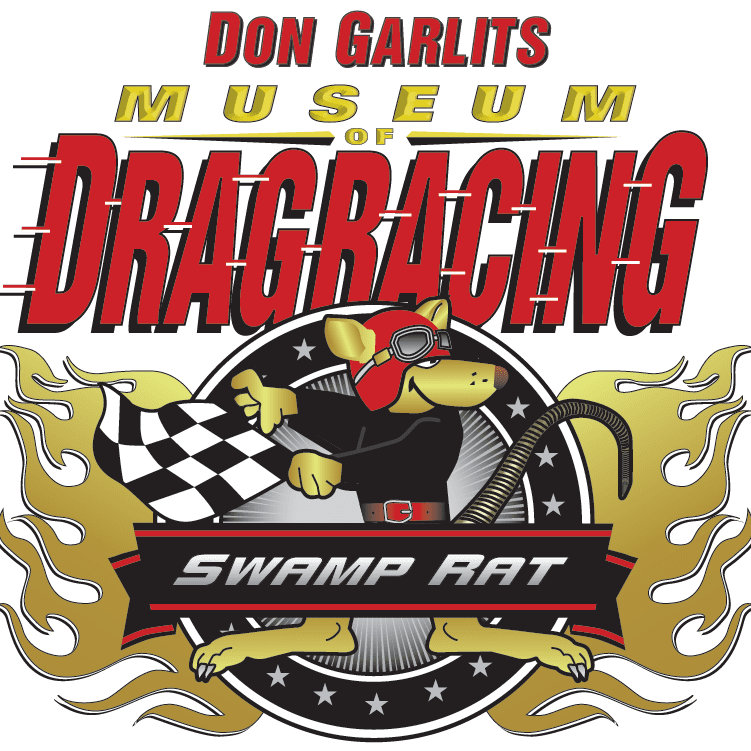2019
Thursday March 14, 2019 Wyndham Garden Hotel, Gainesville Florida.
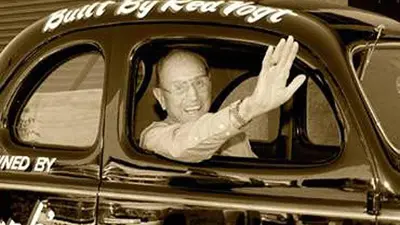
Edward Justice Sr.
Founder’s Award
Edward “Ed” Justice Sr. was one of the three brothers who established themselves as early leaders in the automotive lubricant and fuel additives market in the early 1950s. The brothers-Ed, Zeke, and Gus-were actively involved in business even as teenagers in their hometown of Paoli, Kansas before World War II.
Ed served in the U.S. Army Air Force in England and when he returned, he and Zeke went to work for Frank Kurtis at Kurtis-Kratt building sprint cars and midgets for oval tracks. They moonlighted on evenings and weekends with their own enterprise Justice Brothers Race Car Repair and Fabrication. All the while they experimented with lubricants and additives to increase performance and longevity. Using proceeds from selling a midget racer they built, the brothers started Justice Brothers Inc. to market the line of lubricants and additives. Ed ran sales, Gus was the accountant, while Zeke developed and tested new products. Ed’s ability as a salesman and name marketer propelled the company to success. Ed knew the world of motorsports would be a wonderful marketing tool. He aligned the company with the newly founded NASCAR, the Championship Car Circuit, the Indianapolis 500, and NHRA Drag Racing. Quickly race cars were caring Justice Brothers decals and Ed began to sign prominent drivers as company spokesmen.
In 1950, Johnny Parsons won the Indianapolis 500 in a Justice Brothers sponsored Kurtis-Kraft roadster and the first of the Justice Brothers’ shirts appeared at the Southern 500 NASCAR race at Darlington, South Carolina. Soon after, aspiring young drag racer named, Don Garlits was signed by Ed Justice Sr. and the Justice Brothers were Garlits first corporate sponsor. Over the years the three brothers grew their business thanks to their complementary strengths. Over the years the roster of products grew as did the famous racers who carry the company name to race wins and season championships. Today under the guidance of Ed Sr. son, Ed Jr., the company still thrives.

Lynn Prudhomme
Pat Garlits Memorial Award
Lynn Prudhomme has been a part of her husband’s life since they met in a high school art class in a Los Angeles area high school. First as a girlfriend, and then wife to the iconic drag racing superstar, Don Prudhomme. She found herself sharing some of the spotlight (some say reluctantly) of his fame over the decades of his career.
While she has always been a person who never sought notoriety connected to her husband’s fame, she has been a core for the family, raising daughter Donna Lynn in as normal environment as possible, while supporting her husband as she crisscrossed the country during his 35-year racing career as a driver and later as a team owner. Over many of those years, Lynn, like so many drag racing wives, served as the effective team manager.
Lynn was always aware of the danger of the sport and she’d seen, over the years, how a major crash could shatter a racer’s family in an instant. There was always a thought in her mind that there needed to be some method to provide emotional and financial support to the injured racers and their families.
It was the major, life-threatening, crash involving Shirley Muldowney at Sanair Dragway outside Montréal Québec Canada in 1984 which serve to galvanize the sport to act upon those concerns. Together with the wives of other drag racing stars and others close to the sport-Jerry Amato, Holly Beadle, Penny Beck, Laura Earwood, Pat Garlits, at Eglin, Diane Henrik, Linda McAuliffe, Jeannie Oswald-Lynn helped create what would become DRAW (Drag Racing Association of Women) which organized a campaign to help Shirley with her medical expenses and other needs. This quickly involved into DRAW becoming a charity organization which drew the support of the racers, sponsors, sanctioning bodies, promoters, manufacturers, and the fans. Today what started 35 years ago continues to assist racers and their families with financial and emotional support.
Lynn has also help preserve some of the history of the sport, by helping Don catalog and organize the extensive collection of important race cars that he drove and owned as a team owner. As well as, memorabilia such as trophies, awards, racing apparel, and collectibles. Today these items are preserved at Snake Racing’s shop in Vista, California.
In recognizing Lynn Prudhomme for this award Don Garlits stated, “Like my wife Pat, Lynn has always been there for others, often putting their needs ahead of her own.”
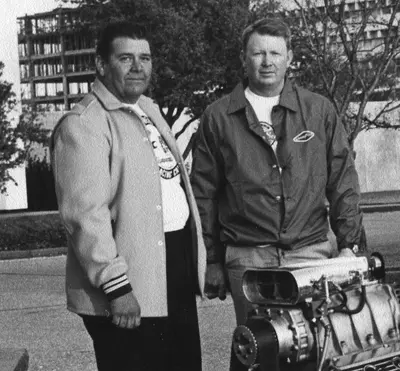
William “Bones” Carroll (1928-2014) & Curt Carroll
Known as the “Texas Whips” William Carroll and Curt Carroll hailed from Irving, Texas. The Carroll brothers owned Carroll Brothers Erection Company which built steel buildings. William and Curt had another deep passion for the sport of drag racing and were major players in the top fuel class during the 1960s and into the early 1980s. The brothers boasted some of the sports top racers of the time driving for them including: Gary Bailey, Kenny Bernstein, Buddy Cortines, Bob Gibson, Ben Griffin, Marshall Love, James Ludden, Murray Oxman, David Pace, Dave Settlers, and Richard Tharp.
The “Texas Whips” made a successful transition from the front engine dragster area to the rear engine dragster with David Pierce and Richard Tharp delivering some of the most memorable results. Tharp recorded the first sub six second run at the NHRA Summernationals in Englishtown New Jersey at 5.97 seconds in 1975. Pace recorded two runner-up finishes at Denver’s NHRA Mile High Nationals and prestigious NHRA US Nationals in 1981. Pace scored a ninth place points finish in 1981 despite running less than half of the NHRA events.
Over the years the Carroll Brothers did most of their racing in and around NHRA’s Division Four (South Central Division) winning a number of races and a season championship along the way.
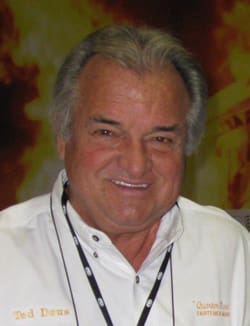
Ted Dzus
Ted Dzus Jr. known affectionately as “The Quarter Turn Man” who took a product, typically known as a cam locking fastener, but commonly known as the “Dzus Fastener” from the aircraft industry and into the motorsports and custom automotive arenas.
The Dzus Fastener was the brainchild of Ted’s grandfather, William an Ukrainian immigrant engineer who worked for a long island aircraft company in the 1930s. Developed to secure aircraft body panels which were loosening and rattling the fastener was deceptively simple, using a spring wire and a button shaft machine to accept the spring into an over center locking fastener, which required only a quarter of a turn to lock or unlock. Following World War II Army and Navy aircraft mechanics remembered this straightforward strong easy use fastener and adapted it to the race car market. The first recorded use in motorsports was by famed Justice Brothers (Ed and Zeke) in California on a Kurtis-Kraft midget oval track car.
Working for his grandfather and father at the company in the 1960s Ted Jr’s love for automotive performance help expand the company’s market horizons outside the aircraft industry. Ted Dzus Sr. became president of Dzus Fasteners in 1964 after his father’s death and Ted Junior assumed control in 1982.
The idea of using the Dzus Fastener spread into drag racing when drag racers like Don Garlits and others used the fastener was marketed by the Mr. Gasket and Moroso companies. They became “must use” items to quickly secure body panels which were often removed to access the engine and driveline for service in almost all forms of motorsports. He promoted the use of his “magic buttons” on his own drag race cars (a 1973 Vega, 1980 Chevette, and 1955 Chevy), plus a 1951 Mercury and a 1951 Kaiser Henry J cutting-edge street rods.
Ted Junior also developed variants for engine valve cover retainers, radiator hose clamps, battery clamps, and hood pins. Outside the automotive and aerospace industry Dzus Fasteners extended into the medical hardware market. Ted Jr created a version of the fastener that is used to repair complex long bone fractures.
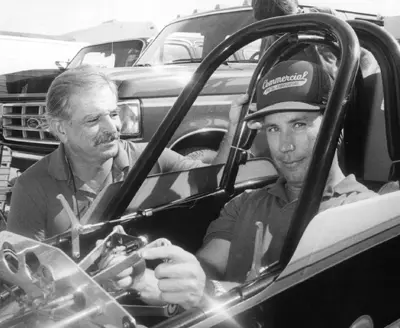
Gary Rupp & Pat Dakin
Gary Rupp and Pat Dakin raced as the “Rupp and Dakin” top fuel team and were strong competitors in the NHRA’s very tough Division III (Midwest division). The pair started racing in the gas class. Rupp owned the car and served as crew chief, while Dakin handled the driving chores. They raced in the gas class in 1970 and moved to top fuel in 1971, racing a front engine dragster for one year. Seeing the rear engine dragster become a consistent winner the pair switched to a Hemi powered Woody Gilmore chassis the following year.
Rupp and Dakin cars were always sharp appearing and performed as well as they looked. When matched against the national touring teams the pair more than held their own. The pair raced heavily at divisional races because of their businesses, but would occasionally venture out to compete at select national events east of the Mississippi River. Within the Midwest Division the pair were always one of the teams to contend for a win. The pair won the NHRA’s LeGrand National Molson at Sanair Dragway outside of Montréal Québec Canada in 1971 and again in 1973.
Rupp and Dakin bought a new chassis for the 1975 season and ran it through the 1977 season when they retired from competition. In 1989 Rupp and Dakin returned to the sport and immediately were contenders. They won the IHRA Top Fuel Championship that year. The team disbanded in 1993 when Gary Rupp retire to move to Florida. Pat Dakin began his own business Commercial Metal Fabricators in Dayton Ohio. Dakin continues to race competitively at selected NHRA events.
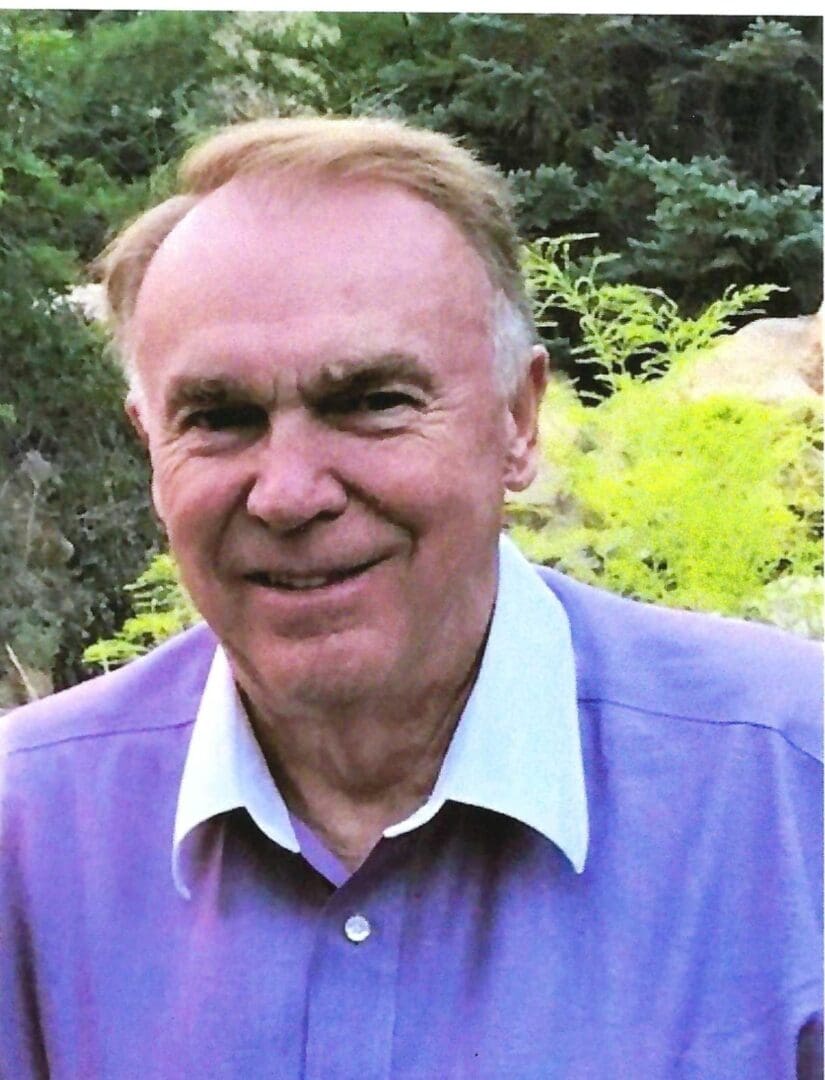
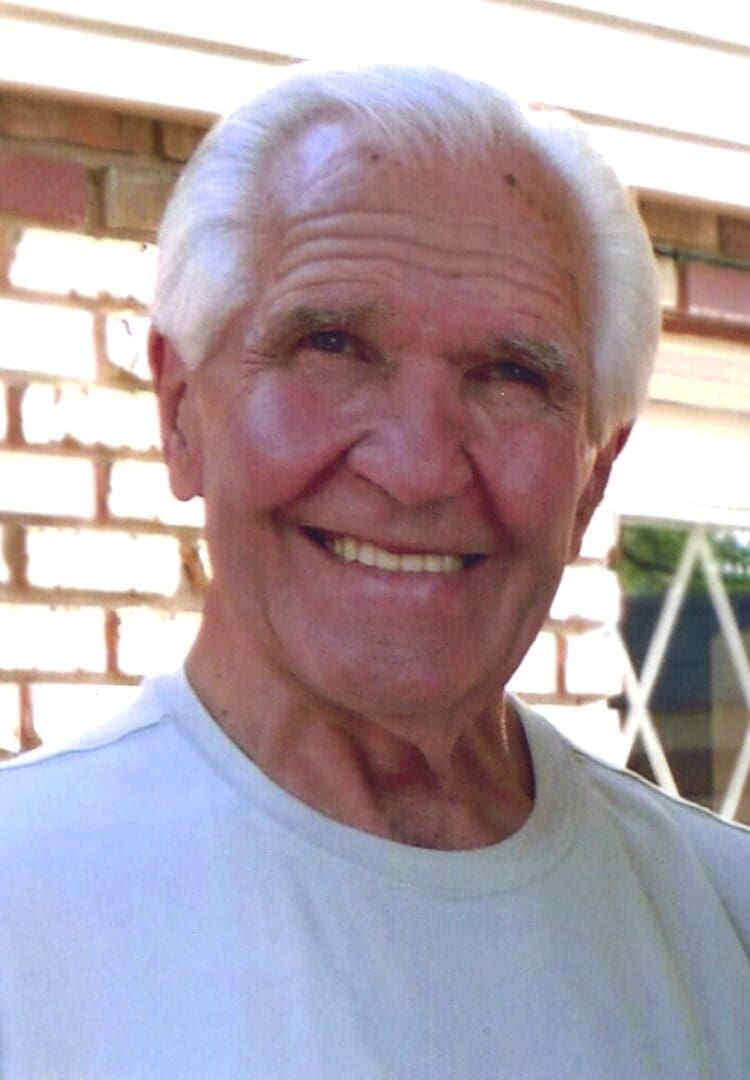
Dan Richins & Rex Pearmain
Dan Richins and Rex Pearmain, known as the “Iron Horse Team”, were not household names in the world of drag racing. The fact is Salt Lake City Utah is a bit off the beaten path when it comes to significant drag racing teams. However, during the mid-1970s the “Iron Horse Team” were significant forces with which to be reckoned. This was particularly true at the high elevation drag strips found in the NHRA’s Division Five (West Central Division), Division Six (Northwest Division), and Division Seven (Pacific Division) events.
Between 1971 in 1976, Richins and Pearmain aggravated a number of top fuel racers who raced at divisional events. Pearmain had the knowledge of how to tune and engine to deliverable reliable repeatable performance in the thin air (low oxygen) of high altitudes. The Iron Horse Team was a low-budget operation and chose to race cautiously while at the same time being competitive. The team had several low qualifiers and track elapsed time records in their career.
When the Iron Horse Team went to low altitude tracks, a Pearmain tune-up to compensate for the oxygen-rich conditions coupled with Richins driving skills delivered significant results. The team’s career defining moment was the stunning 5.930 seconds elapsed time recorded at the NHRA’s Supernationals in Ontario California in 1973. This secured them the number eight spot in the prestigious Cragar Five Second Club. They were the first member of this club with a Donovan Hemi powered car. Richins and Pearmain’s knowledge also allowed them to achieve low qualifier positions at the AHRA Northern Nationals in Fremont California.
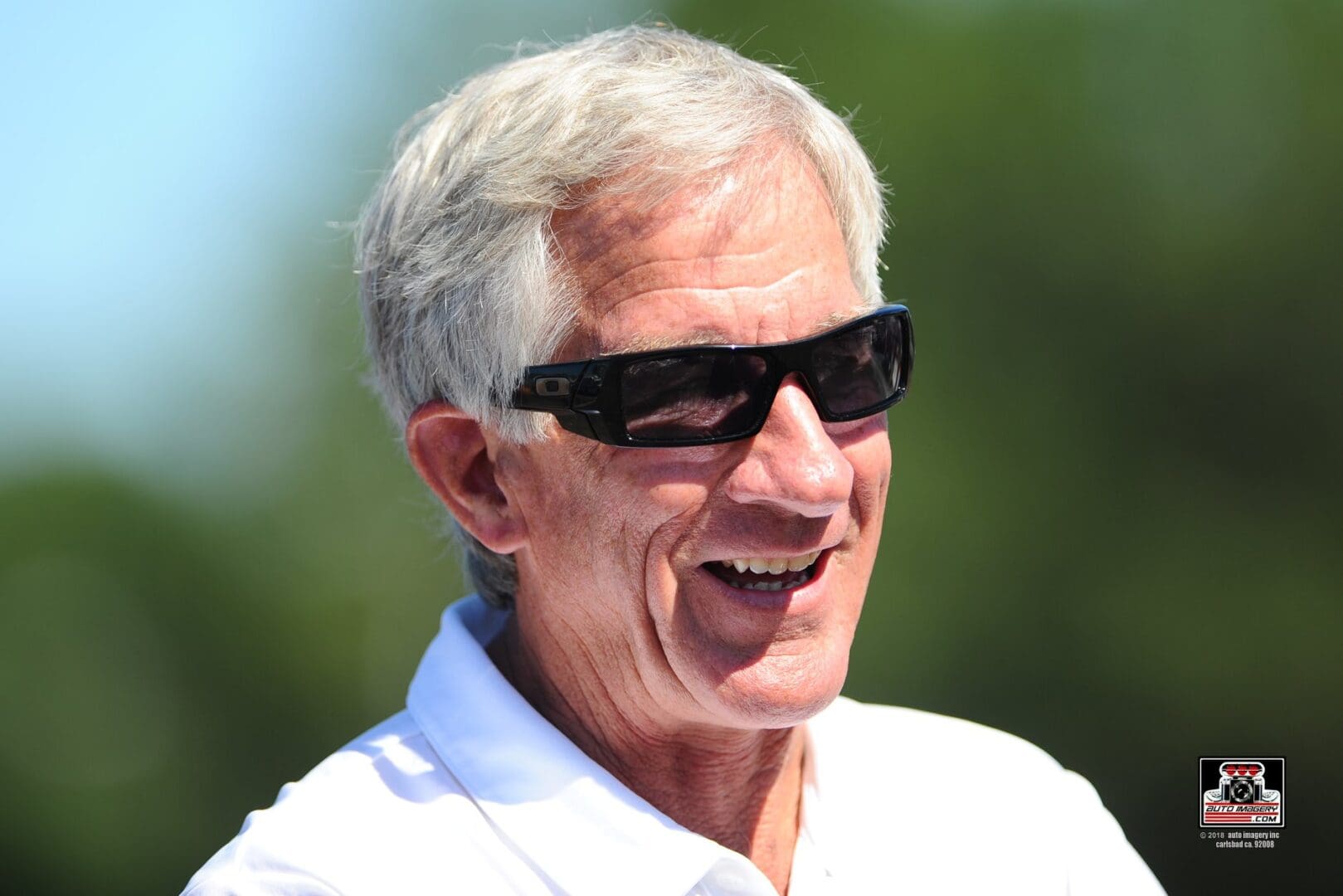
Mike Lewis
Mike Lewis could be described as a “man for all seasons”. Mike was almost born into the world of drag racing, when his grandfather, Alford Stauffer built the famed Maple Grove Raceway in Mohnton, Pennsylvania when Mike was 12 years old. Racing got to his blood even earlier when his father would take him to the famed Williams Grove, Pennsylvania, dirt track to watch the midgets and the USAC Champ cars battle. However, his loyalty changed when he first heard a nitromethane fuel dragster’s cackling and thundering exhaust. During his teen years he worked at the family’s dragstrip learning just about every facet of the track from the ground up. After attending Kutztown University, he returned to the track in a management role, including announcing.
Mike partnered with brother Kent in the “Sparkling Burgundy” top fuel dragster which the pair campaigned from 1970 to 1976. He stopped driving to become the Track Master at Maple Grove Raceway in 1971 and later assumed the role of President. He would leave Maple Grove in 1989 to join the National Hot Rod Association as Vice President of Field Operations overseeing NHRA’s seven divisions and member tracks. In 1995 he was named as vice president of NHRA and also General Manager of NHRA’s Indianapolis Raceway Park home of the crown jewel event the US Nationals. In 1998 drawing on his vast experience in track management and his relationship in the sport he formed Ace Ventures in Indianapolis a motorsports consulting organization.
He joined Don Schumacher racing as Vice President (a position he still holds today) and help develop the team’s position as a premier motorsports operation featuring three top fuel cars and four funny cars. Don Schumacher racing has won 17 world championships and over 330 national event titles.
As if that is not enough Lewis continues to race at select Nostalgia Drag Racing events winning the 2012 NHRA California Hot Rod Reunion Funny Car class in the Gutierrez and Smith “Brand X” Ford Mustang funny car.
Mike Lewis has created and collaborated in a number of special initiatives between the sport in several charities. Mike Lewis despite all of his significant contributions to the sport as a race track executive, race team executive, sanctioning body executive, and a pretty good race car driver remains humble and very approachable. He still loves the sport to which he has devoted his life.
